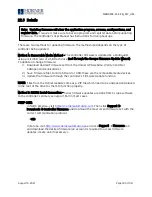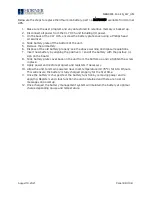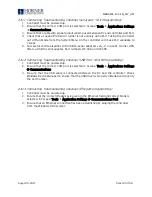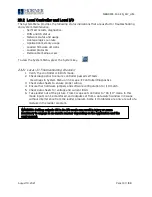
MAN0974-13.1-EN_XL7_UM
August 19, 2021
Page 189 | 198
CHAPTER 23: TROUBLESHOOTING & TECHNICAL SUPPORT
23.1 Connecting to the XL7 OCS
Cscape connects to the local controller automatically when the serial connection is made. The
status bar below shows an example of a successful connection. This status bar is located in the
bottom right hand corner of the Cscape window.
In general, the Target number should match the Local number. The exception to this is when
the controller is being used as a "pass through" unit where other controllers on a CsCAN
network could be accessed through the local controller.
Determine connection status by examining feedback next to Local & Target in the status bar
of Cscape.
Table 23.1
–
Cscape Target & Local Numbers
Local: ###
If a number shows next to Local, then communication is established to the
local controller.
Local: No Port
Cscape is unable to access the COM port of the PC. This could mean that
Cscape is configured for a COM port that is not present or that another
program has control of the COM port. Only one Cscape window can access
a port at a time. Subsequent instances of Cscape opened will indicate No
Port.
Local: No Com
Cscape has accessed a PC COM port but is not communicating with the
controller. This typically occurs when the controller is not physically
connected.
Local: ???
Unknown communication error. Close Cscape, power cycle the controller
and reopen Cscape with a blank project. Check Local.
Target: #(I,R,D)
If I (idle), R (run), or D (do I/O) shows next to Target number then
communication is established to the target controller.
Target: #(?)
Communication is not established to the target controller. Check node ID of
controller and set Target to match. Make sure local connection is
established.










































